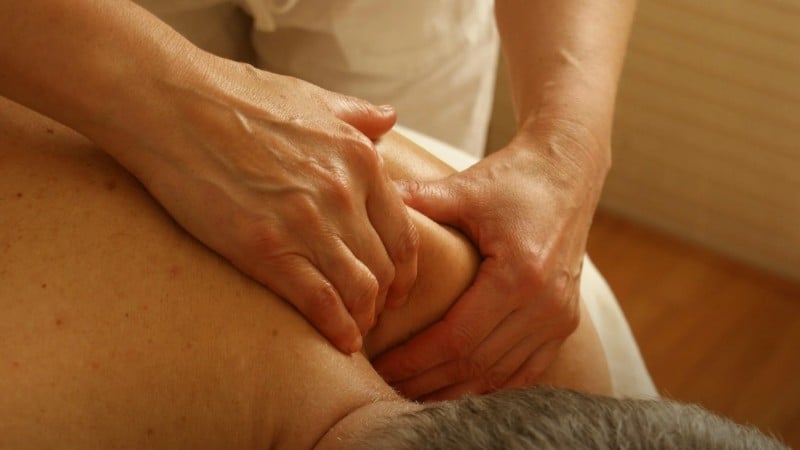Chronic pain is a persistent condition affecting millions worldwide, with over 50 million Americans experiencing ongoing discomfort. Defined as pain lasting longer than 12 weeks, it can result from injuries, medical conditions, or even unknown causes. Beyond physical discomfort, chronic pain can contribute to mental health challenges such as anxiety, depression, and post-traumatic stress disorder (PTSD).
While medications provide relief for some, they often come with side effects and may not be a long-term solution. A comprehensive approach—including lifestyle changes, alternative therapies, and mental well-being strategies—can help manage pain effectively.
Key Takeaways
Managing chronic pain calls for a comprehensive approach that includes lifestyle modifications, alternative treatments, and strategies for mental well-being.
- Lifestyle modifications, such as regular exercise, an anti-inflammatory diet, and ensuring quality sleep, can greatly reduce pain.
- Alternative treatments like acupuncture, chiropractic care, massage therapy, and herbal supplements provide natural pain relief options.
- Mental health strategies, including stress reduction techniques and cognitive behavioral therapy, help address the emotional side of chronic pain.
Lifestyle changes for pain management
Adopting healthy lifestyle habits can significantly improve pain levels and overall well-being. Making small but consistent changes in daily routines can provide lasting benefits.
Stay active with gentle exercise: Regular movement helps reduce stiffness, improve circulation, and release endorphins, natural pain relievers. Low-impact exercises like walking, yoga, swimming, and Tai Chi can ease discomfort without worsening pain. Before starting a routine, consult a healthcare provider to ensure the exercises suit your condition. For those with limited mobility, gentle stretching or seated exercises can still be beneficial.
Maintain an anti-inflammatory diet: Eating the right foods can help manage pain by reducing inflammation. Fatty fish, nuts, seeds, leafy greens, berries, and whole grains provide essential nutrients that support joint and muscle health.
On the other hand, processed foods, sugary snacks, refined carbs, alcohol, and caffeine can worsen inflammation and pain. Staying hydrated is also crucial, as dehydration can lead to muscle cramps and stiffness.
Prioritize sleep for recovery: Poor sleep can worsen chronic pain, making healing more difficult. Establishing a consistent sleep routine and creating a restful environment—dark, cool, and quiet—can improve sleep quality. Using supportive bedding, avoiding caffeine and screens before bed, and engaging in relaxing activities like reading or meditation may also help. If pain disrupts sleep regularly, consulting a healthcare provider for additional strategies can be beneficial.
Alternative therapies for pain relief
Complementary and alternative therapies can provide effective pain relief without relying solely on medication. Many people have found success with natural treatments that promote relaxation, improve circulation, and reduce inflammation.
Acupuncture and chiropractic care: Acupuncture, an ancient Chinese medical practice, involves inserting thin needles into specific points of the body to stimulate healing and reduce pain. Studies suggest that acupuncture can help alleviate pain by increasing blood flow and triggering the release of endorphins.
Similarly, chiropractic care focuses on spinal adjustments to improve mobility and alleviate discomfort. It is particularly beneficial for individuals experiencing back, neck, or joint pain.
Massage therapy and heat therapy: Massage therapy helps relax tense muscles, improve circulation, and reduce stress—factors that can contribute to chronic pain.
Different types of massage techniques can help manage pain depending on its cause and severity. Swedish massage uses gentle pressure to improve circulation and promote relaxation, making it ideal for general pain relief. Deep tissue massage targets deeper muscle layers to release tension and stiffness. For localized muscle tightness, trigger point therapy focuses on specific areas to relieve discomfort and improve mobility.
Heat therapy, such as warm baths or heating pads, can also help by relaxing muscles and increasing blood flow to affected areas.
Herbal remedies and supplements
Certain natural supplements and herbs can help reduce inflammation and provide pain relief. Turmeric, which contains curcumin, is known for its strong anti-inflammatory properties. Ginger may help ease muscle pain and soreness, making it a popular choice for those with chronic discomfort. Magnesium supports nerve function and helps prevent muscle cramps, while B vitamins play a crucial role in nerve health and overall pain management.
Mental and emotional well-being
Chronic pain is not just a physical condition—it affects emotional and psychological health as well. Managing stress and maintaining a positive mindset can make a significant difference in how pain is perceived and experienced.
Stress reduction techniques
High stress can worsen pain perception, but mindfulness and relaxation techniques help restore balance. Meditation shifts focus away from pain, while deep breathing reduces stress and muscle tension. Guided imagery creates a calming mental space, making discomfort easier to manage. Practicing these techniques regularly strengthens resilience and improves pain management.
Cognitive Behavioral Therapy (CBT)
CBT is a form of therapy that helps individuals change negative thought patterns related to pain. By altering the way pain is perceived, CBT can reduce emotional distress and improve coping mechanisms. Therapists specializing in CBT can teach strategies to identify and challenge negative thoughts, develop healthier coping mechanisms, and build resilience and self-confidence.
Seeking professional support
For those struggling with chronic pain, specialists can offer personalized treatment plans. Physical therapy improves mobility and reduces pain, while acupuncture and chiropractic care provide targeted relief. Mental health support through therapy or support groups can also help manage emotional challenges.
Managing chronic pain requires a comprehensive approach beyond medication. Staying active, eating well, prioritizing sleep, and exploring holistic treatments can provide lasting relief. Since no single solution works for everyone, trying different strategies and seeking professional advice can help individuals find what works best. With a proactive approach, chronic pain can become more manageable, leading to a better quality of life.














